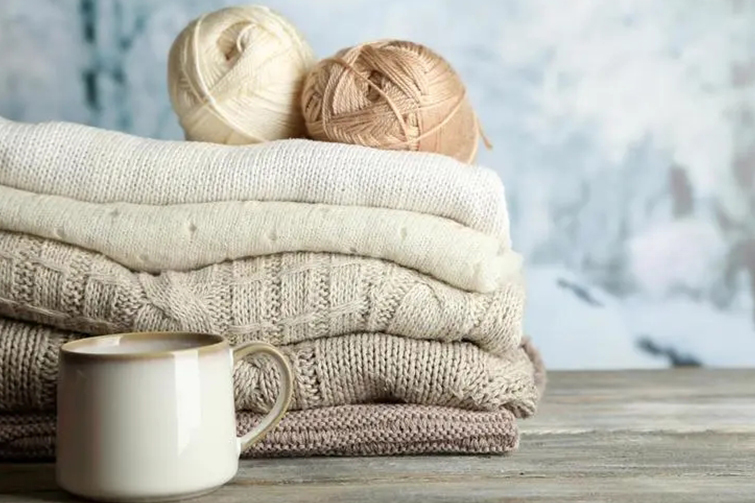

Common Materials Used in Knitted Garments
Knitted garments are a staple in fashion, loved for their comfort, flexibility, and warmth. From cozy sweaters to stylish scarves, knitting allows for a variety of textures and designs. However, the type of material used in the knitting process significantly affects the look, feel, and functionality of the garment. Here’s a guide to some of the most common materials used in knitted clothing and their unique characteristics.
1. Wool
Wool is one of the most popular materials used in knitting, known for its warmth, durability, and natural insulating properties. It comes from the fleece of sheep and other animals such as alpacas and goats (for cashmere and mohair). Wool has excellent elasticity, allowing knitted garments to stretch and return to their original shape, making it ideal for winter wear.
- Benefits: Warmth, breathability, moisture-wicking, and durability.
- Common Uses: Sweaters, scarves, hats, gloves, and socks.
2. Cotton
Cotton is a lightweight, breathable fiber that is widely used in knitting, particularly for spring and summer garments. It is a natural material that is soft, comfortable, and hypoallergenic, making it suitable for sensitive skin. However, cotton doesn’t retain heat as well as wool, so it’s more appropriate for warm weather or layering.
- Benefits: Softness, breathability, easy care, and absorbency.
- Common Uses: T-shirts, lightweight sweaters, cardigans, baby clothes, and summer accessories.
3. Acrylic
Acrylic is a synthetic fiber often used as a more affordable alternative to wool. It is lightweight, warm, and easy to care for, making it a popular choice for mass-produced knitted garments. Acrylic is also durable and resistant to moths and chemicals, but it doesn’t have the same breathability or natural moisture-wicking properties as wool.
- Benefits: Affordability, warmth, color variety, and machine-washable.
- Common Uses: Sweaters, blankets, scarves, and hats.
4. Cashmere
Cashmere is a luxurious, high-end material made from the soft undercoat of cashmere goats. It is prized for its softness, warmth, and lightweight feel. While more expensive than other materials, cashmere is incredibly comfortable and has a delicate texture that feels luxurious against the skin.
- Benefits: Softness, warmth, lightweight, and long-lasting.
- Common Uses: High-quality sweaters, scarves, shawls, and winter accessories.
5. Silk
Silk is a natural protein fiber produced by silkworms and is often used in high-end knitted garments. It has a smooth, luxurious texture and a natural sheen. Silk is lightweight and breathable, but it is also strong and has excellent moisture-wicking properties. It is often blended with other fibers, such as cotton or wool, to enhance the softness and drape of knitted clothing.
- Benefits: Softness, luster, breathability, and moisture-wicking.
- Common Uses: Lightweight sweaters, shawls, lingerie, and delicate accessories.
6. Alpaca
Alpaca fiber is known for being softer and warmer than sheep’s wool while being lightweight and hypoallergenic. It is sourced from alpacas, animals native to South America, and is often used in high-quality knitted garments. Alpaca fibers have a silky texture and provide excellent warmth without the bulk, making it a popular material for cold-weather clothing.
- Benefits: Softness, warmth, hypoallergenic, and lightweight.
- Common Uses: Sweaters, scarves, blankets, and hats.
7. Linen
Linen is a plant-based fiber made from the flax plant. It is lightweight, breathable, and highly durable, making it ideal for warm-weather knitted garments. Linen has a slightly rougher texture compared to cotton but softens with wear and washing. Its natural moisture-wicking properties make it comfortable to wear in hot climates.
- Benefits: Breathability, durability, moisture-wicking, and eco-friendliness.
- Common Uses: Summer tops, lightweight sweaters, and breathable accessories.
8. Bamboo
Bamboo yarn is a sustainable and eco-friendly option in the world of knitting. It is derived from the bamboo plant and has a silky texture, offering a soft feel against the skin. Bamboo is naturally antibacterial, breathable, and moisture-wicking, making it an excellent choice for sensitive skin and warm-weather garments.
- Benefits: Softness, breathability, sustainability, and moisture-wicking.
- Common Uses: Baby clothing, lightweight sweaters, and eco-friendly fashion.
9. Mohair
Mohair comes from the Angora goat and is known for its lustrous sheen and silky texture. It is a luxurious material that is often blended with other fibers to add softness and warmth. Mohair is lightweight but provides excellent insulation, making it suitable for both cool and warmer weather, depending on the knit style.
- Benefits: Sheen, softness, warmth, and lightweight.
- Common Uses: Sweaters, scarves, and shawls.
10. Blends
Many knitted garments use blended fibers to combine the best qualities of different materials. For example, a blend of wool and acrylic can provide warmth with easy care, while a cotton-silk blend can create a lightweight garment with a luxurious feel. Blends allow designers to balance affordability, durability, and comfort.
- Benefits: Versatility, enhanced durability, and improved texture.
- Common Uses: A wide variety of garments including sweaters, scarves, and accessories.
Conclusion
The material used in knitted garments greatly affects the garment’s appearance, texture, durability, and comfort. From natural fibers like wool, cotton, and silk to synthetic options like acrylic and bamboo, each material offers unique qualities that make it suitable for different seasons, styles, and preferences. When choosing a knitted garment, consider factors like warmth, breathability, and care requirements to find the material that best suits your needs and lifestyle.







